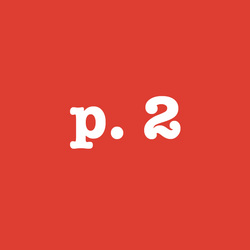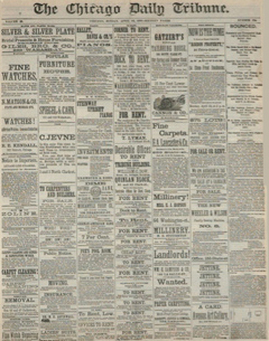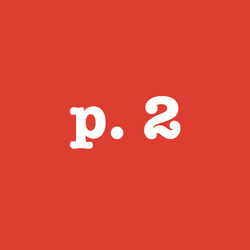|
The Janet A. Ginsburg Chicago Tribune Collection is available for research at Michigan State University Libraries.
|
|
Newspapers of the 1800s were shaped by a variety of technical constraints: slow presses, handset type, and even the cost of paper, which was made one sheet at a time. Rather than print more pages, it was often easier and cheaper to try to squeeze more copy onto a larger sheet. This page, for example, is about 40% larger than its contemporary counterpart. The Morning Courier, a New York paper, was even larger: 11 columns across on what was appropriately called a “blanket” sheet.
Although ads have crept onto the front pages of many major newspapers and are a staple on newspaper websites, for a long time the front page was considered sacred space: news only. But in 1870s Chicago, front page ads meant staying in business. The Great Fire of 1871, followed two years later by The Panic of 1873 and a recession, left the city reeling. The ads sold the Tribune as much as the Tribune sold the ads. Newspapers were the only way people could find out what was available and where, whether it office space, lumber or cows. The roots of the American suffrage movement reach back to the anti-slavery efforts of the 1840s, but it took another 75 years to pass the 19th Amendment, guaranteeing a woman’s right to vote. Surprisingly, almost half the states already women’s suffrage laws on the books prior to 1920. In 1890, Wyoming was became the first state with women voters to join the Union, though they were only allowed to vote in local and state elections.
The Illinois women’s suffrage law, passed in 1913, was significant for several reasons: Illinois was the first state with a large city— Chicago—to pass such a law and, along with Wisconsin, was among the first states east of the Mississippi. More importantly, the law was written to allow women to vote for “presidential electors,” in effect circumventing federal law and allowing women to vote for president. (Electors vote in the Electoral College. It is their votes that determine who actually wins presidential elections.) Written by Evanston attorney Catherine Waugh McCulloch, the law survived a constitutional challenge in 1914. The Supreme Court’s 4 to 3 vote, though, was close, split along party lines: Republicans pro-suffrage and Democrats opposed. Note that Mrs. Belle Squire—the woman who would rather have a vote than a husband—was actually a Miss who became a “Mrs.” in name only because, she wrote, “it gives me the privileges of a married woman without imposing the responsibilities and duties of a wife.” Meanwhile, Miss Helena Bingham only wants a husband who would vote for the Vote! |
DIGGING OUT THE LEDE: THE STORY HIDDEN IN PLAIN SIGHT
I also began searching for reference books and articles that could shed some insight on what I was finding. There were plenty of books on graphic design, but their focus was almost always on more contemporary work. Everything pre-1960 tended to be lumped together in briskly written historical oveviews: cave-painting, the development of the alphabet, the invention of the printing press. Newspaper history, too, was narrowly defined as journalism history, with an emphasis on the heroics of famous muckrakers and the stories they covered. Likewise, books about the Chicago Tribune itself, notably Lloyd Wendt’s doorstop epic, Chicago Tribune: Rise of a Great American Newspaper, focused on tales of journalistic triumph and editor and publisher genius. There was also a curious bias about what exactly what qualified as newspaper "art." Was it an artist's sketch or a photographer's print, or the final product: the newspaper itself? The sheer size of daily print runs, which could top one million on a Sunday, made it difficult for many people to see a newspaper's worth, much less that of an individual news page, visually or otherwise. Yesterday’s newspaper was fish wrap. Even hot off the presses, newspapers were cheap, sometimes costing just pennies. Only now, when what was born mass and common has become rare and treasured, is it possible to see a different perspective. The Tribune company was always quite clear about the value of its mission, and, of course, the profitability of the business. The most useful reference I came across was a small volume published by the Tribune with a big chest-thumping title: The Pictured Encyclopedia of the World’s Greatest Newspaper. Published in1928, at the height of the decade's roar, the book covered everything from printing technologies to market research in remarkable detail (now part of the MSU collection). Page by page, though, the old newspapers themselves revealed the deeper story. The exhibit--The Art of the Message—would be about the evolution of the modern newspaper, the world’s very first mass medium, as a graphic medium. Form and function were braided, so the show would also be about the message of the art: the news of the day. The newspapers revealed the past in all its layered complexity, the important and the banal preserved together in ink. Although shaded by the views and biases of publishers, editors and reporters, this was history untarnished by hindsight, impervious to digital updates. Whether covering the long fight for women’s suffrage, or the instant obliteration of Hiroshima by an atomic bomb, there was both an intensity and an innocence to the latest edition. TECH, INNOVATION, DEMOGRAPHICS & MONEY Today, bytes, bandwidth and mobility are the game-changers. Back then, it was telegraphs, telephones, railroads, automobiles and airplanes. News stories that once took weeks or even months to travel around the world, now took only hours, or minutes. In 1900, a photograph was such a rarity in a newspaper, its inclusion would itself become a story. Within a few years there were dozens of photographs in the paper every day. By 1917, when the U.S. sent troops to Europe to fight in WWI, pictures of soldiers were a regular feature. Twenty years later, during WWII, news photos brought the reality of the war right into readers’ homes. Nothing like this had ever happened before. The world was flattening long before Tom Friedman coined the phrase and, in fact, long before Tom Friedman. In 1850, the power behind the Tribune’s “power press” was a pony tethered to a treadmill. The telegraph had just “brought Chicago a month nearer the East.” By the early 20th century, automated presses, automated typesetting, half-tone reproductions and fleets of gas-powered delivery trucks transformed the newspaper from a small local publications to a full-fledged medium for the masses and an advertising revenue gusher. The first page in the exhibit was printed in 1877, just six years after the Great Chicago Fire and after a post-fire building boom had gone bust. To attract the advertisers, six out of seven columns of prime front page space was offered up for ads on a Sunday paper. The constraints of cramped layouts, limited by the metal plates used for printing, forced advertisers to get creative with typography if they wanted to be noticed. My favorite ad header? “Cow! Cow! Cow!,” in bold period type and proof, indeed, that Chicago was a cow town... Meanwhile, squashed in the corner of the seventh column was the lead news story: a classic Chicago tale of ballot-box stuffing. A crude illustration was scratched into the printing plate to help explain the scheme, showing a bird’s eye view of the two rooms involved in the sleight-of-ballot. The newsroom and the advertising department were starting to learn from one another how to make the most of the powerful visual medium they shared. This became one of the major themes of the exhibit. The push for more, better, faster news was juiced by the need to build circulation to build ad revenues—a point about which the Tribune was unabashedly straightforward. Women readers in particular were prized because it was thought that they were responsible for most household purchases, even if they didn’t earn the money that paid for them. According to the Women Reader Interest entry in the Pictured Encyclopedia of the World’s Greatest Newspaper: “The Tribune has gone to extraordinary lengths to secure women readers, to win their confidence, and to induce them to rely on Tribune advertising…The morning newspaper – reaching the prospect when she is fresh and receptive – is sure the ideal advertising medium for reaching the women of Chicago.” Whole new sections of the paper were developed specifically to appeal to women. An ad from 1926 aimed at potential advertisers boasted:
“The Tribune’s Society editors are, of course, women; there are no whiskers on our Love Advisor and our Art Editor is a women also…The Tribune covers all departments of interest to women which clearly belong in a daily newspaper, and many other women (sic) departments which were formerly considered as exclusively within the field of the magazine—fiction, book reviews, moving picture reviews, articles on cooking and dietetics…Remember, all these departments for women are handled by women.” The development of the modern newspaper was in large part, it would seem, due to women.
So, too, was the popularity of the automobile, according feature article from 1913 — the year before Henry Ford cranked up the assembly line for the Model-T — is to be believed: “One of the most important improvements in automobile manufacturing – the self-starting machine – is the outgrowth of man’s effort to please women… Primarily the automobile was invented for pleasure… (If) all the women in Chicago (were) transported to some barren isle, the automobile would be relegated to the junk heap.” A few years later the paper was printing road maps for the city’s growing legions of drivers. A map from 1917 was even revised “to include recently paved roads.”
By the 1920s, General Motors was taking out full page ads extolling the virtues of car ownership: "The long, long struggle for personal power that ends with us at the wheel of our automobile. Now that’s copywriting.
BEHIND THE FRONT PAGE Each day’s paper was a hard-fought triumph in a fierce, high-stakes battle to conquer the competition. One of my favorite stories—maddeningly impossible to confirm—stars a young Charles A. Lindbergh in a supporting role. Before his transatlantic flight turned “Lucky Lindy” into a hero and celebrity in 1927, he flew the mail route between St. Louis and Chicago (air mail service started in 1918). The paper hired Lindbergh to fly some negatives of photos of a tornado in southern Illinois up to Chicago in a bid to scoop the competition. Generally, everybody traveled by train. According to the story, Lindy was met at an airfield downstate by a mysterious man who handed over some a packet of negatives and disappeared. Once in Chicago, the precious cargo was rushed by speeding car to the newsroom. The photo technician seemed to spend forever in the darkroom, finally emerging pale and shaken. The negatives were blank! Had he botched the job? Just then, the phone rang. It was the reporter at the scene wondering why the pilot wasn’t at the airfield to meet him. The mysterious man, it turned out, was from another paper. He was a plant to fake out the Tribune. The reporter brought the negatives back himself by train. The photos made the second edition. (continue to News Art, page 3) |























